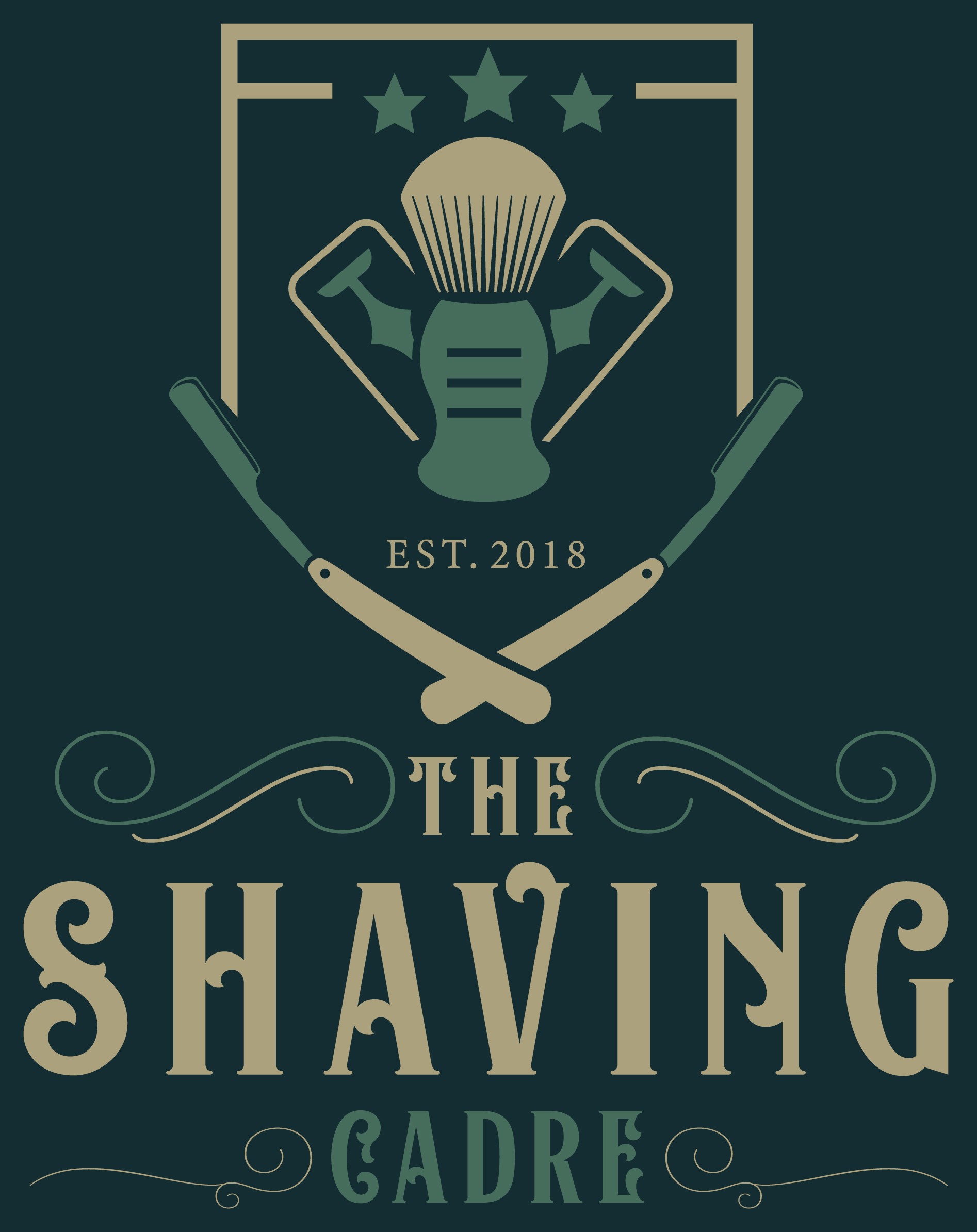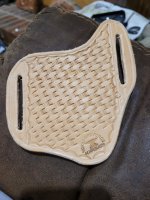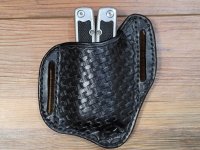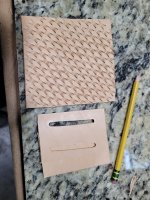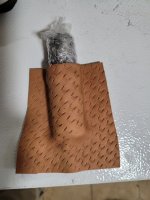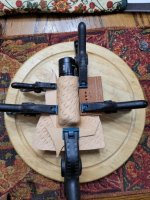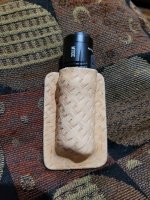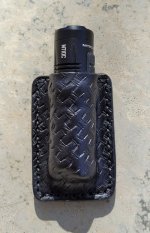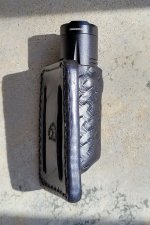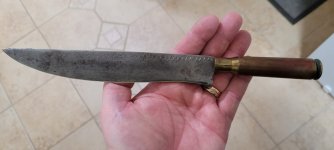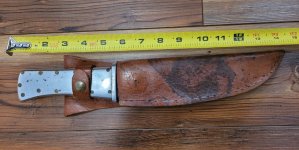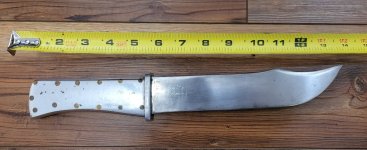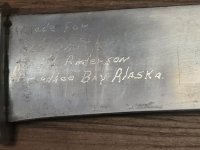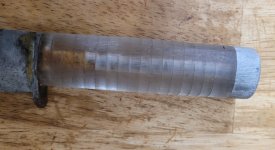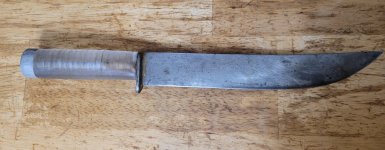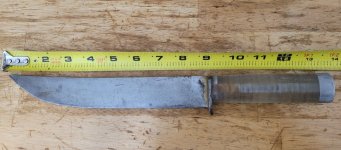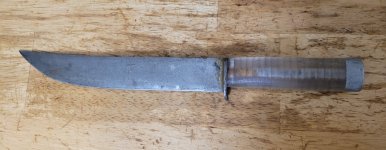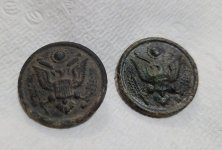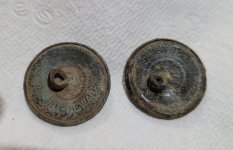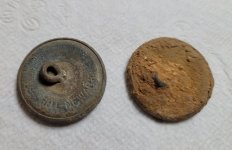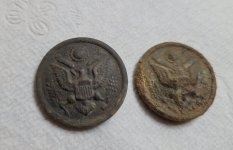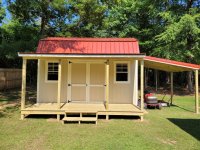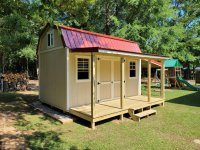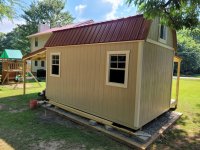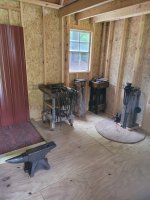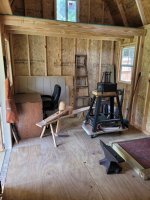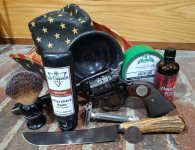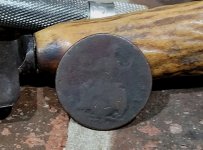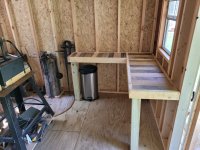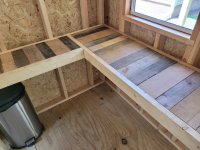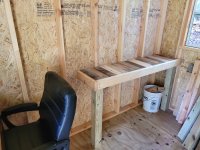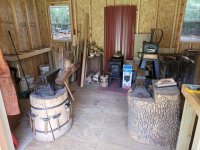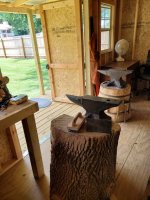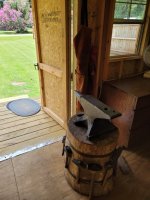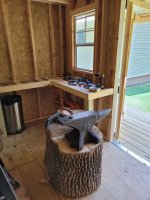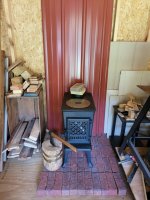As your Minister of Manliness I've not been very faithful to regular postings lately, but I hope to provide a good shot of testosterone.
First, let's talk shaving. I use a Parker variant, so I can adjust the aggressiveness. I mixed it up at the end of my Feather blades life & discovered that for me any irritation is directly resultant from that first pass. So I shifted the setting down to 3 for the first pass then back up to my normal setting of 4 for my last 2 passes. Usually I get so-so shaves at the end of my blades life, but doing this shift down on the first pass, no chance of irritation.
Ok, now on to man stuff. I finished my first knife that was forged from a coil spring out of a car. Nothing special, but it will slice paper effortlessly. My wife has been enjoying using it in the kitchen. The handle is made from curly oak I had hanging around.
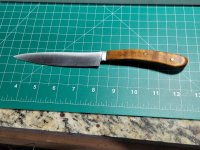
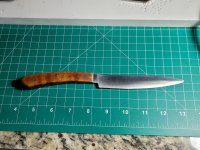
I got to try it out the other day on a ham we smoked, and man it was just melting right through it effortlessly. It felt great to use something I completely made from raw materials. From forging the blade to mounting the handle materials.
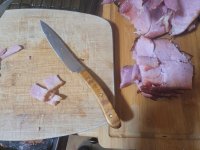
This first knife was a learning tool and I have to thank @ShawnF for all his wisdom & advice.
First, let's talk shaving. I use a Parker variant, so I can adjust the aggressiveness. I mixed it up at the end of my Feather blades life & discovered that for me any irritation is directly resultant from that first pass. So I shifted the setting down to 3 for the first pass then back up to my normal setting of 4 for my last 2 passes. Usually I get so-so shaves at the end of my blades life, but doing this shift down on the first pass, no chance of irritation.
Ok, now on to man stuff. I finished my first knife that was forged from a coil spring out of a car. Nothing special, but it will slice paper effortlessly. My wife has been enjoying using it in the kitchen. The handle is made from curly oak I had hanging around.


I got to try it out the other day on a ham we smoked, and man it was just melting right through it effortlessly. It felt great to use something I completely made from raw materials. From forging the blade to mounting the handle materials.

This first knife was a learning tool and I have to thank @ShawnF for all his wisdom & advice.
